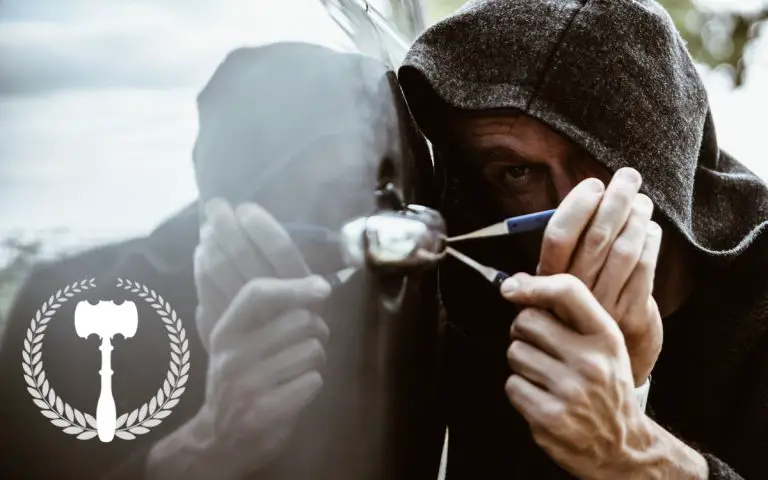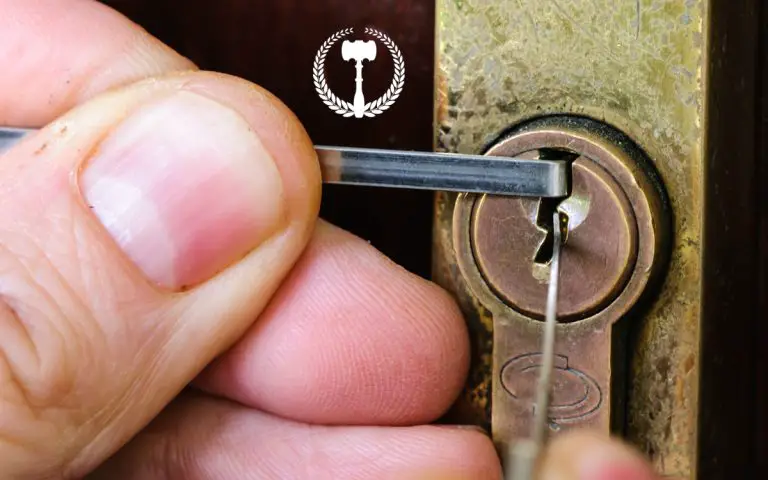Unlock the Mystery of Skeleton Keys
A skeleton key is a bypass tool used by locksmiths and lock pickers when faced with a warded lock. Due to the simple security design of a warded lock, a skeleton key is usually able to open it easily.
A skeleton key is made of the minimum amount of metal material so it can bypass the security of a warded lock.
The name comes from its minimalist features, a single narrow rib of metal with a small bit piece at the end.
Skeleton keys are specific to warded locks and don’t open other lock types, such as pin tumbler locks.

In the back of the warded lock, there is the security bolt or locking lever. The skeleton key’s narrow design passes the wards intended to block all but the correct key. However, the bit of the skeleton key is able to rotate and activate the locking mechanism thus opening the lock without interacting with the security features of the lock.
To further understand what a skeleton key is, we first need to explore what a warded lock is and how they work.
What is a “warded” lock?

Warded locks have been around since the ancient Romans and very likely were used to secure their valuables hidden away in chests in their insecure homes. Their simple mechanics have since been deciphered and provide little security.
Old warded locks were constructed to only allow the proper key to enter its keyway. Modern keyways may have large key ways that attempt to make tensioning the lock an issue for a lock picker.
Modern keyways may have larger key ways but are designed to not allow the wrong key to activate the locking mechanism. These too have easy to bypass flaws.
As more secure locks were developed, the warded locks were replaced in high-security situations.
An examination of a warded lock’s key
First, let us take a look at a warded lock’s key.
Warded keys look unique and interesting. They also seem to always be on a large ring with a handful of other keys in movies and are frequently used as old jail keys or the key to a great treasure.

The circular handle part of the key is called the bow.
The thin round or flat part extending from the bow is called the shank or stem.
Some keys may get ornamental as they go further down the stem including a feature called a collar, a thick ring around the stemming.
The pin is the end of the key that extends into the depths of the lock.
The bit portion of the key is where they receive their unique look. There may be more than one bit that extends off the stem.
Key wards are the cuts in the bit that allow the key to pass the warding within the lock. Some complex patterns have their own names: Box of Wards, Bridge Ward, Hook Ward, Sash Ward, Solid Ward, and Wheel Ward.
The bit and its key wards are the only part of the key that engages the locking mechanism of a warded lock.
Warded lock examination
That was a quick look at the warded lock and key. Let’s take a deeper look so we can understand its relationship to a skeleton key.
From the outside, a warded lock looks like a standard pin tumbler lock. Inspecting a warded lock closer, you will immediately note the odd-shaped keyway and layered materials on cheap warded locks.
The keyway likely contains a small brass plate that spins freely. They come in odd shapes and sizes.
There is the classic-looking keyhole from old prison cells. They are shaped like a circle on top of a triangle with a rounded bottom.
Modern keyways are often in the shape of a “w”, to me it looks like a wide lightning bolt.
Looking within the lock past the keyway, we observe more of a cavern instead of the usual pins and ledges of a pin tumbler lock.
The wards themselves are built into the construction of the lock. Warded locks are built using layered materials.
The layers include holes for the keyway, the shackle, and the internal warding.
Wards serve as holes and obstructions within the key chamber.
As the key enters the lock they pass holes in the layers of the lock, I am reminded of the game show, “Hole in the Wall”. The key must pass through the “Holes” or “warding” freely in order to fit within the lock.
The gaps in the warding and divots in the key serve an additional purpose.
As the key is rotated, the warding prevents the wrong key from rotating as the warding obstructs the bits on the wrong key from rotating fully.
The correct key will rotate and its biting will fit the divots and not be obstructed by the warding of the lock.
As the key rotates, the bit(s) at the end of the key activates the locking mechanism and opens the lock or moves the locking bolt clear.
That last sentence is where we discover the weaknesses and flaws in warded locks.
Despite the intricate design of the bits of the key, the locking mechanism is not difficult to access or engage with while using something other than the correct key.
Welcome the skeleton key

Due to the small variations in the biting of warded locks, the majority of skeleton keys will be either one or two bits.
Most locksmiths and lockpickers carry a small set of skeleton keys. They are as follows:
- Two (2) one-bit double-sided skeleton keys (different thicknesses)
- Two (2) two-bit double-sided skeleton keys (different thicknesses)
- One (1) one-sided one-bit skeleton key
When using skeleton keys on a warded lock, begin with the thickest key and work your way down from there.
Don’t be surprised if multiple skeleton keys open a single warded lock.
Summary
A comprehensive skeleton key set is a great tool to have in your lock picking set. They are effective against warded locks and cheap addition to your tool kit. We recommend this set from Sparrows.
In terms of warded locks, avoid using them for situations involving valuables. There are better ways to keep your treasure chest secure.
Warded locks are interesting in their historic nature but provide minimal security.
I would love to add a unique Box of Wards, warded locks, and keys like this one to my collection.
Thanks to the Wizard of Locks’ video and the Legal Lock Picker’s video for their helpful explanations and visual aids in understanding warded locks and skeleton keys.









[…] to fit lock picking tools into the keyhole. And that leads us to why various deep hooks or skeleton keys might not be as useful as one might […]